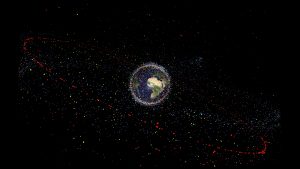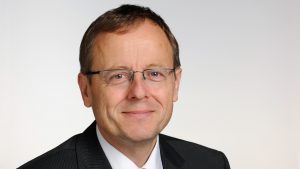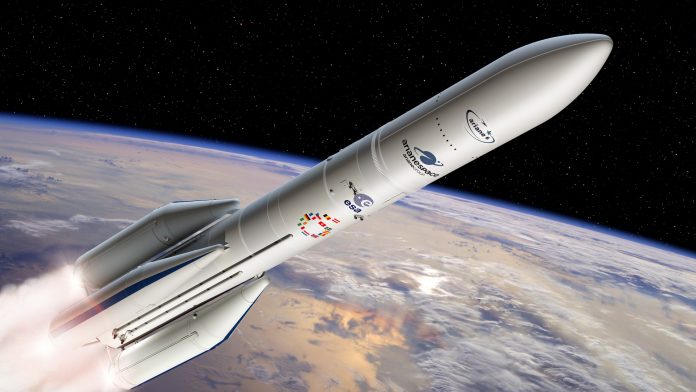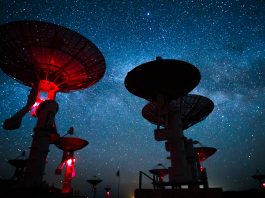The out-going Director General of the European Space Agency (ESA), Jan Wörner, spoke to The Innovation Platform about ESA’s priorities during his five years of working there, such as launchers and space debris, as well as some of the ways the COVID-19 pandemic has affected the agency.
Wörner has been the head of the ESA for over five years. In that time, the agency has achieved much, with numerous successful missions being undertaken. ESA’s priorities have also evolved, with the Director General continuing to place an important focus on areas such as European launchers, space debris (and safety and security in a more general sense), and the ‘Moon Village’.
In a final interview with The Innovation Platform’s International Editor, Clifford Holt, before he leaves his post (to be succeeded by Josef Aschbacher, the current director of ESA’s Earth observation programmes), the Director General discussed the progress that has been made in some of these areas, as well as how the COVID-19 pandemic has changed how the space agency has been able to operate (and some of the opportunities this might present moving forwards).
How has the coronavirus pandemic impacted the way that ESA operates?
COVID-19 has meant that we have had to accelerate ESA’s digital transformation. While the coronavirus has presented significant challenges for almost, if not all, sectors and industries, it is my strongly held belief that there is also an opportunity to be seized. At ESA, the digital transformation has enabled us to change the internal management system, for instance, while administration procedures have also been sped up – rather than taking three to four weeks to process a payment for an industry contract, for example, this is now taking just one.
ESA’s digital transformation will not stop there. We are now developing ‘digital twins’ – a digital twin of our spacecraft means that we are able to simulate potential events, while a digital twin of the Universe will see the development of a model that can be navigated by anyone, so that they can see what is happening in space and where. A digital twin Earth, meanwhile, will combine Earth observation, navigation, telecommunication, and science to simulate things like climate change. Finally, we will also develop a digital twin of ESA, and I would have loved to have still been a part of the agency when that is realised.
Outside of ESA, I believe that the COVID-19 pandemic will see the permanent breakdown of the hierarchical structures that have dominated companies and organisations until now. My hope is that from the ashes will arise a new type of organisation with what could perhaps be termed ‘synaptic structures’, within which each and every person is connected with each and everyone else. That would really revolutionise the way organisations and companies function. Again, this is also something that I would have very much like to have led at ESA.

Do you feel that you made as much progress as you would have liked in certain areas – such as European launchers and space debris? Are there any particular areas you would like your successor to continue to prioritise?
It was very difficult to convince our Member States to pay for the removal of space debris, but we succeeded. And I was delighted that we did, as this is a very important issue. Of course, this is also an issue that is not going to go away, and so the future may require more than just a single mission or a spacecraft that is able to remove several pieces of debris at the same time.
When it comes to launchers, some 15 years ago I gave a presentation on how the cost of launchers could be reduced. At that time, and coming from a civil engineering background, I was focusing on reusability (although a different type of reusability to that being developed by Elon Musk, for instance) through the use of controllable parachutes.
We are now indeed starting to bring the cost of launchers down in Europe and, moving forwards I believe that winged bodies will also play a key role in the reusability of future European launchers.
Is there enough support in Europe outside of ESA to support the private sector in developing these launchers?
When we look at the USA and the private sector, activities are being developed by companies owned by such figures as Elon Musk, Jeff Bezos, Richard Branson, and others. But, of course, they all have access to a considerable amount of public money – rather than being classed as representing the private’ sector, then, we could perhaps designate them as being a part of the ‘commercial’ sector. They are all very good businessmen and they have been successful in being awarded money from NASA to develop their technologies; NASA is thus still the main engine for innovation in this area, despite many believing that the results come from purely private sector endeavours.
In Europe, on the other hand, many private companies are active in the space arena, and some of those are developing launchers – such as UK company Orbex, or others in Germany, which are developing micro-launchers. My hope is that this is the first part of the revolution that we need in order for the sector to evolve.
Is there anything left for you to achieve before you leave your post as ESA DG?
I am, in fact, scheduled to leave at the end of February, and so there is little time to complete any outstanding efforts. The time of my departure has been brought forward because my successor, Josef Aschbacher, is to begin his role as DG at that time. Thus, rather than two DGs being in situ simultaneously – which could become a complication as ESA staff might not know which of us to go to or might get two very different answers to the same question etc. – I have elected to stand down earlier than my mandate dictated in order to ensure a smooth transition.
 Jan Wörner
Jan Wörner
Out-going Director General
European Space Agency (ESA)
Tweet @esa
https://www.esa.int/
Please note, this article will also appear in the fifth edition of our new quarterly publication.









